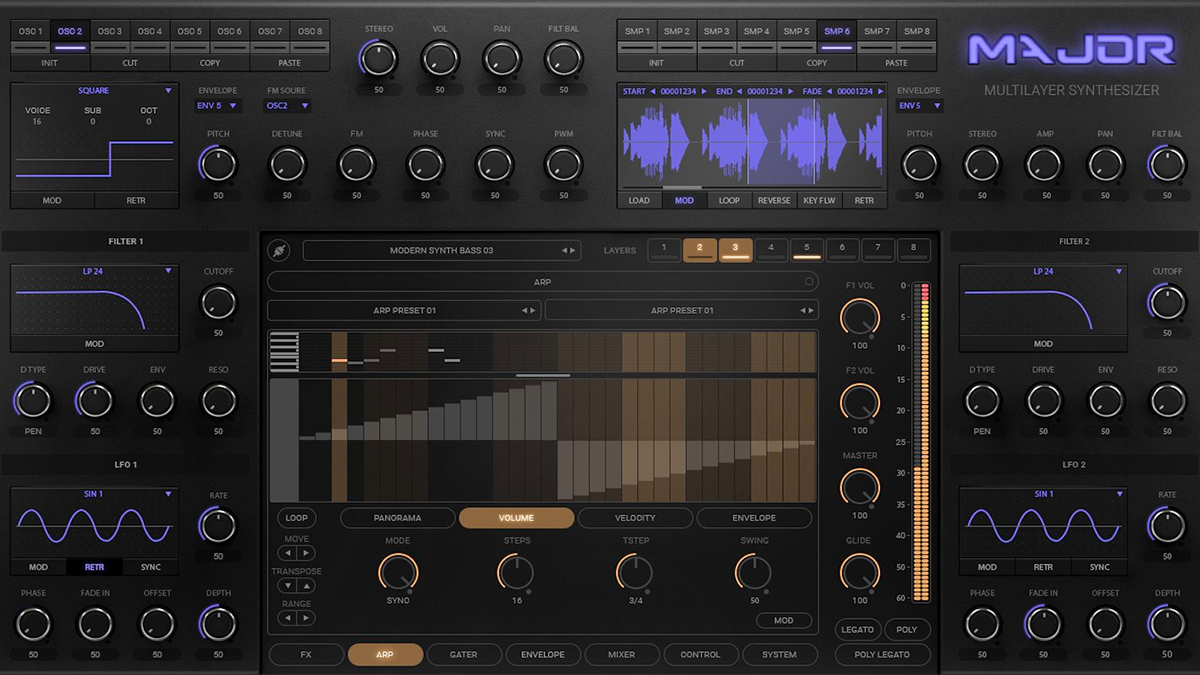GPU Audio reveals Major, the first synth plugin to be powered by your graphics card
A Major development in more ways than one

We already knew that GPU Audio’s graphics card processing technology could be used to power effects, but now the company has revealed that it’s working on a GPU-fuelled synth plugin known as Major.
Announced during a recent Pro Synth Network Show, Major is an eight-layer instrument that’s described as a cross between existing synth plugins Sylenth1 and Rapture. It gives you eight oscillators, a sub oscillator and eight samplers per layer, so the sound design potential is seemingly vast.
All layers can be mixed down to stereo, but the fact that you also have the option of sending each one to its own channel means that Major can be used as a ‘spatial’ synth, with sounds mixed all around you. Other highlights include FM oscillators, arpeggiators, effects and randomisation options.
Major is very much a work in progress at this stage, but GPU Audio says that it hopes to have something for its users to try by the end of the year. You can already beta test the company’s Modulation effects bundle, though; as things stand, this runs on Windows machines with NVIDIA GPUs only, but AMD support is coming soon, and GPU Audio says that it’s working closely with Apple and hopes to roll out macOS support in November.
If you want to be among the first to get access to Major, download the ‘beta suite’ Modulation bundle plugins and start submitting bug reports to help the developers with refinements. Find out more on the GPU Audio website.
Get the MusicRadar Newsletter
Want all the hottest music and gear news, reviews, deals, features and more, direct to your inbox? Sign up here.



I’m the Deputy Editor of MusicRadar, having worked on the site since its launch in 2007. I previously spent eight years working on our sister magazine, Computer Music. I’ve been playing the piano, gigging in bands and failing to finish tracks at home for more than 30 years, 24 of which I’ve also spent writing about music and the ever-changing technology used to make it.
“Excels at unique modulated timbres, atonal drones and microtonal sequences that reinvent themselves each time you dare to touch the synth”: Soma Laboratories Lyra-4 review
“A superb-sounding and well thought-out pro-end keyboard”: Roland V-Stage 88 & 76-note keyboards review









